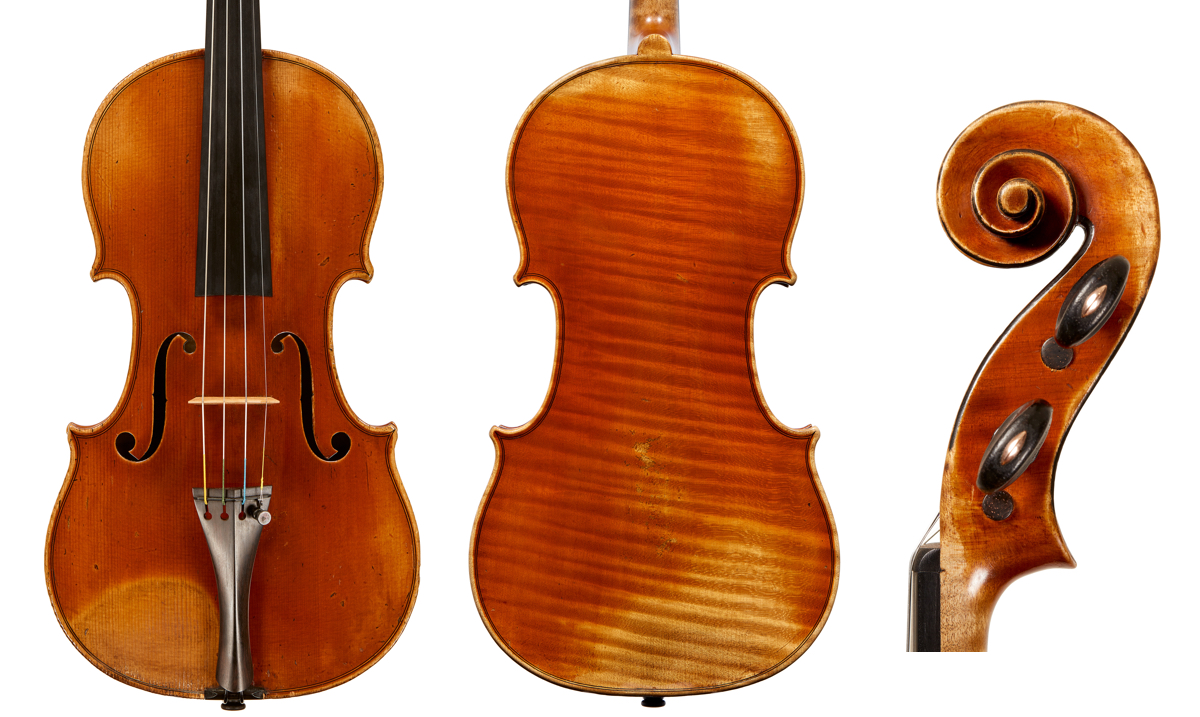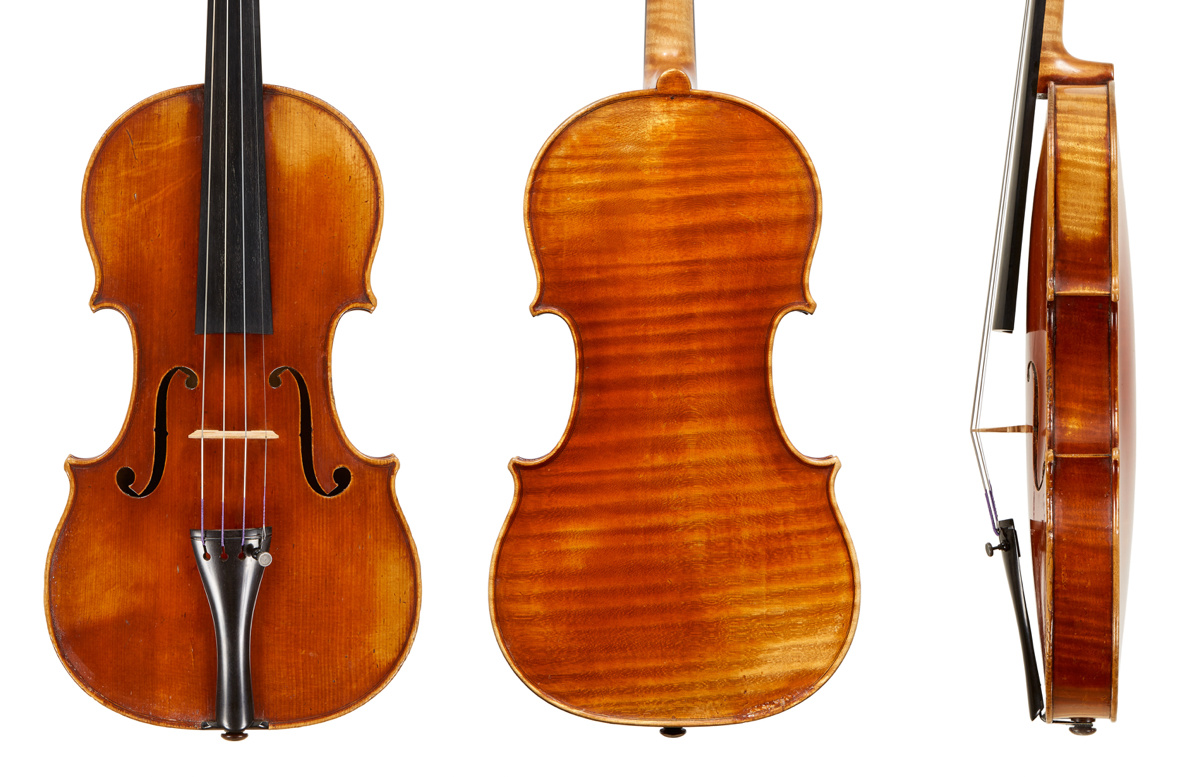Charles Adolphe Gand was born in Paris in 1812 and was 33 when his father, Charles François Gand, died in 1845 (see part 2). He had trained with his father from an early age and was quite competent to take over the Gand shop.
Maison Charles Adolphe Gand (1845–55)
The years 1845–51 were a very difficult period for Charles Adolphe. The first order of the day was to keep the clientele intact. On May 25 (15 days after Charles François’s death), he sent a letter to a large segment of the Gand clientele, announcing the death of his father. In this letter he expressed the hope that the clientele would continue to put their trust in the Gand House.
The second important action was to maintain the official functions and titles of their father, by contacting the appropriate institutions. On June 1 he wrote to the Directeur de la Musique, requesting the transfer to his name of Luthier du Conservatoire (Violin Maker of the Music Conservatory) and Luthier de la Musique du Roi (Violin Maker of the Royal Orchestra). The first was immediately granted, since his father had held this position for years. The second one was unfortunately denied.
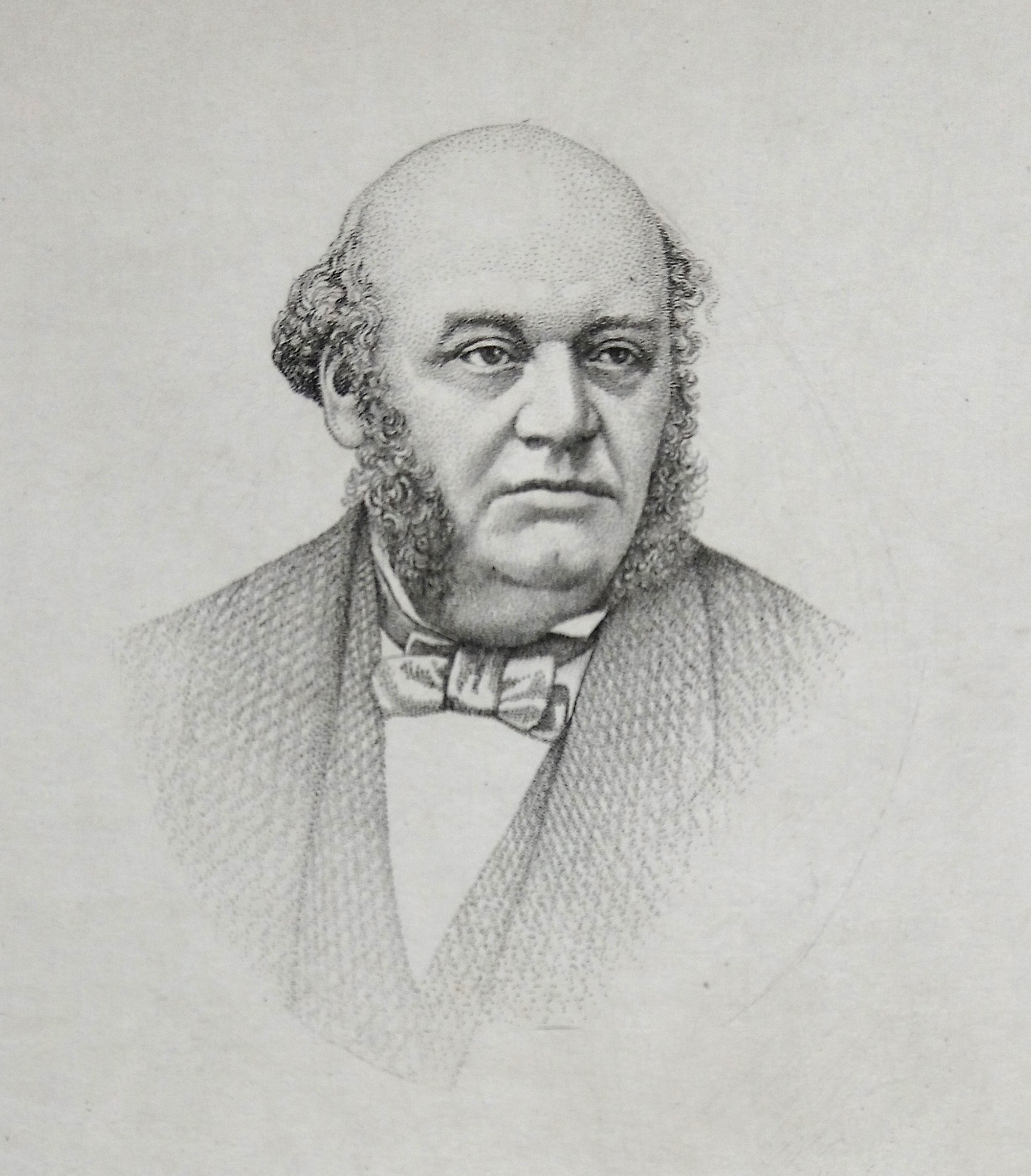
Engraving of Charles Adolphe Gand. Image: courtesy Gael Francais
Charles Adolphe then wrote to a Comte to announce the loss of his father (the Comte’s name and position at the court are not specified). In this letter he mentioned that his father shared with Jacques Thibout the function and title of Luthier de la Musique du Roi, and that as a consequence of his father’s death, Thibout had become its sole official holder. He begged the Comte to allow him to keep at least the honorary title Luthier de la Musique du Roi. Charles Adolphe wrote: ‘It is so precious to me, that the loss of this title could affect the trust of the people who know our Maison.’ The request for an honorary title was in the end granted since the instruments of the Royal Chapelle had been made by Lupot and Gand. However, Thibout remained the sole holder of the official function and received full remuneration for his services to the Crown.
‘It is so precious to me, that the loss of this title could affect the trust of the people who know our Maison’ – Charles Adolphe Gand
Between 1845 and 1848 Charles Adolphe’s labels mention the title of Luthier de la Musique du Roi et du Conservatoire de Musique. Although the first title was only honorary, Charles Adolphe managed to save face with his clientele. The details that Thibout received full remuneration for his service and Gand only the honorary title remained confidential. He swallowed his pride and continued to pursue the great career his father had established, by working hard and maintaining the impeccable reputation of the Maison. In this he was successful and by 1847 he had created a second register referred to as Signalements, which ultimately included the description of 920 fine instruments.
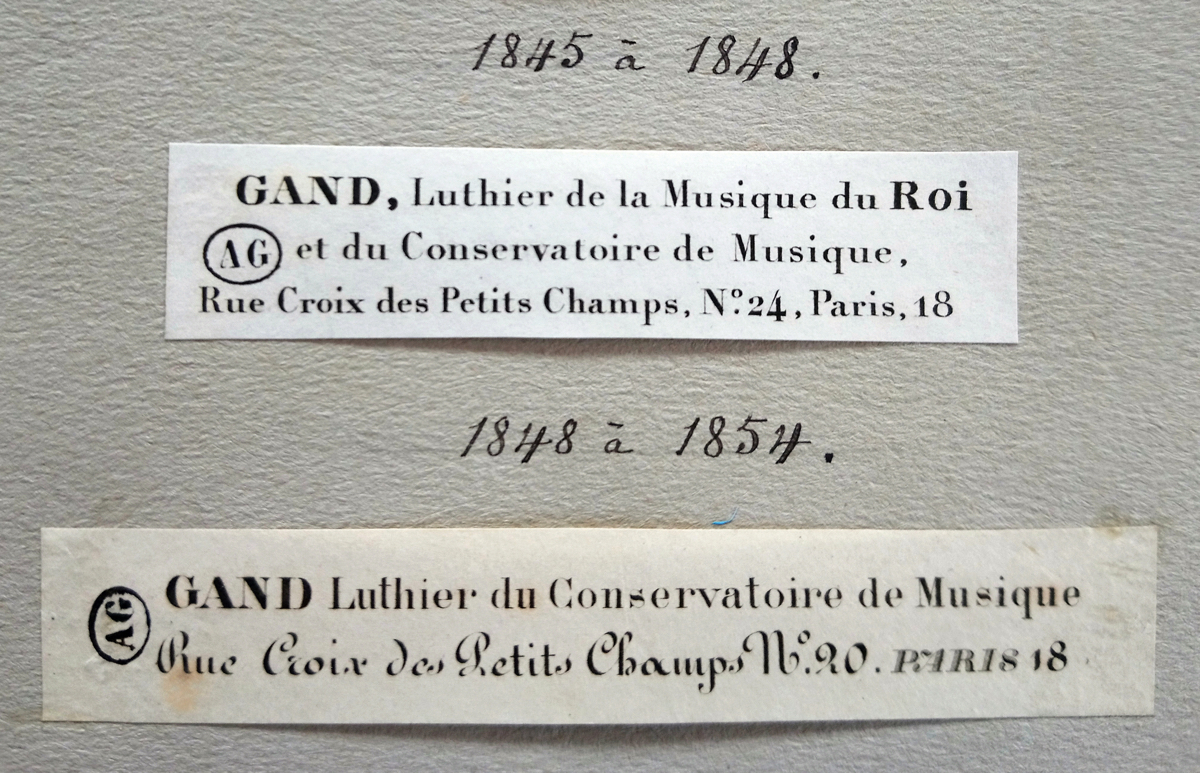
Charles Adolphe Gand’s labels. Image: courtesy Gael Francais
Charles Adolphe’s work was soon to be disrupted by new political events. On February 22, 1848, a new revolution took place and two days later the Tuilleries palace was invaded by angry crowds and pillaged, forcing Louis Philippe to abdicate and flee to England. The disturbances precipitated the flight of capital and the closure of many small enterprises. They continued until the summer. A period of calm ensued and finally in November a new political figure, Louis-Napoleon Bonaparte, was appointed president of the Second République 1848–51. However, instability persisted and on December 10, 1852 Louis-Napoleon proclaimed himself Emperor and re-established order.
In all Charles Adolphe had to endure six years of political instability and financial difficulties. His labels from 1845 to 1848 confirm that he kept the function of Luthier de la Musique du Roi et du Conservatoire de Musique. However, his labels from 1848 to 1853 reveal that he was during that period only Luthier du Conservatoire de Musique: the abdication of Louis-Philippe had suddenly removed his royal title.
During the early years of the Second Empire, between 1852 and 1855, the political situation and the economy started to improve. This came as a great relief to the Gand shop. But for Charles Adolphe at this point, one thing was desperately missing: the official acknowledgment of the competence of the Maison Gand and he set out to obtain the function and title of Luthier de la Musique de l’Empereur.
It was imperative to contact various institutions and high-level officials to obtain this prestigious position and he first used a well-connected friend to write to the State Minister’s chief of cabinet. The friend wrote on December 1852 a strong recommendation: ‘Mr Gand is a devoted man who has demonstrated his ardent support for the current government.’ A flurry of letters from Charles Adolphe followed. The first one was sent on January 15, 1853 to Mr Auber, Director of the Musique de l’Empereur, requesting the official function and title of Luthier de la Chapelle Impériale et de la Musique Impériale, and the second one to the Ministre d’Etat with the same request. [1] These letters remained unanswered. The Empire had more important issues to address. Nevertheless, Charles Adolphe’s labels of 1853–55 reveal that he had at least obtained the function and title of Luthier du Conservatoire Imperial de Musique (Violin Maker of the Imperial Music Orchestra). His request for the official function of Luthier de la Musique de l’Empereur was, however, still pending.
Maison Gand Frères (1855–66)
By 1855 Charles Eugène Gand, Charles Adolphe’s younger brother was 30 and well advanced in his profession. He had been increasingly assisting Charles Adolphe and since around 1850 they were known unofficially as Gand Frères. Charles Adolphe was mainly in charge of running the workshop and all commercial operations in Paris; meanwhile Charles Eugène was responsible for external business relations in other French towns and abroad. This exposure allowed Charles Eugène to become an exceptional violin expert.
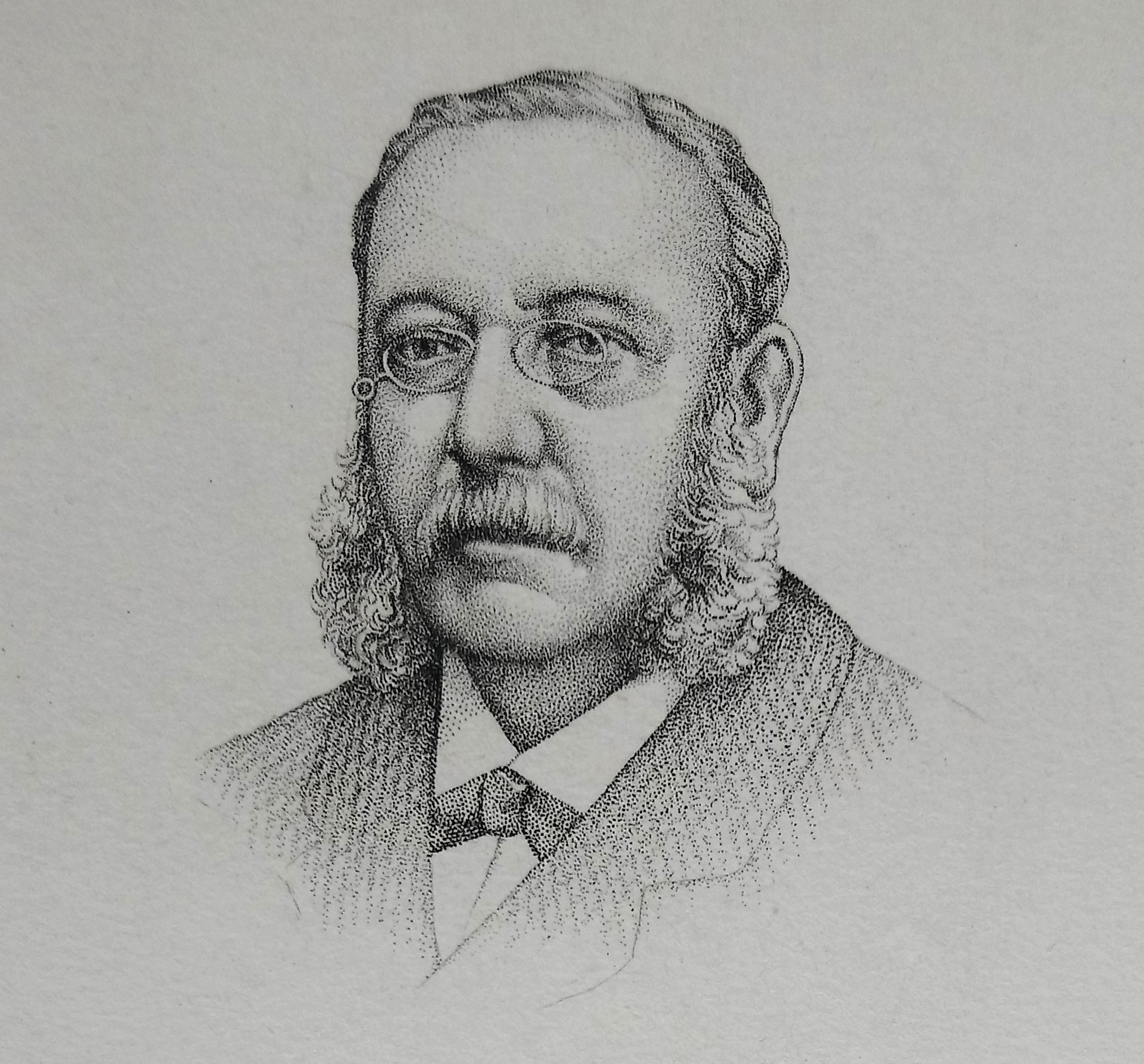
Engraving of Charles Eugène Gand. Image: courtesy Gael Francais
The event of the Exposition Universelle, which was to take place in Paris from May to December 1855, was fast approaching and Charles Adolphe’s request for the Imperial position had still not been granted. On June 16, 1855, he wrote again to Mr Auber and to the Duc de Bassano, Grand Chamberlain at the Tuilleries Palace. Both letters reiterated the request for the title of Luthier de la Musique de l’Empereur. Charles Adolphe met Auber in his office on July 4, who informed him that he never received the original request. In a subsequent letter sent to Auber the next day, Charles Adolphe mentioned that he also had submitted the same request to the Duc de Bassano, but also to no avail. In this new letter, Charles Adolphe insisted that the request for obtaining this title was extremely important and urgent, since he had been accepted to exhibit in the coming Exposition Universelle. He argued that, without the title, he would not be able to take part. [2] Charles Adolphe was evidently not in the mood to exhibit any instruments without a proper appointment by the Emperor. The idea was to have an elegant sign positioned in his stand that would show that he was under the auspices of the Emperor and thereby enhance his stature.
Charles Adolphe was of a tenacious nature. The minister’s cabinet finally approved his request and Gand Frères were able to display their new title during the event. The Exposition Universelle was of great significance to Napoleon III, as any opportunity to enhance the image of the new Empire was of utmost importance. The event was a great success for him as well as the Gand brothers. Around 50 violin makers took part and the major violin making houses participated. The Vuillaume family was present in force and Jean Baptiste Vuillaume, who never missed any Exposition since 1827, won the highest award with the Médaille d’honneur. The Gand Frères won a First Class medal for all their instruments and bows.

Gand Frères label bearing their hard-won imperial title. Image: courtesy Gael Francais
From 1855 only one type of label was used: ‘GAND FRERES, Luthiers de la Musique de l’Empereur et du Conservatoire Imperial de Musique’ and in 1857 the brothers decided to solidify their association legally by creating a company under the name Gand Frères. This period was their most prosperous. Apart from their work for the Conservatoire, the brothers were busy gathering instruments from Cremona to present to collectors and rich amateurs alike. Charles François Gand’s clients remained faithful to the shop and new concert artists joined in. The relationship between the successors of Nicolas Lupot and an ever-growing clientele was thus transmitted from one generation to the other, as virtuosos would recommend their students to the current successor. [3] This period ended abruptly with the sudden death of Charles Adolphe in January 1866, leaving Charles Eugène to run the business alone.
Part 4 continues with the Maison Gand and Bernardel Frères.
Gael Francais is Jacques Francais’s nephew, Emile Français’s grandson and Henri Français’s and Albert Caressa’s great-grandson. He is the last descendant of one of the most ancient lines of instrument makers in France, going back to 1612.
Notes
[1] Gand, Charles Adolphe, letter dated Dec 1852 and draft letter dated Jan 1853, Gael Francais personal archives.
[2] Gand, Charles Adolphe, draft letters dated June and July 1855, Gael Francais personal archives.
[3] Francais, Gael, The Demands of 19th Century Concert Artists as Revealed through Clients’ Letters to the Gand House of Violin Making: An Inquiry into the Changing Relationship between Violin Virtuosos and French Houses of Violin Making through the 19th and 20th Centuries, Violin Society of America, VSA Journal vol. XXV, no. 1, 2017.
